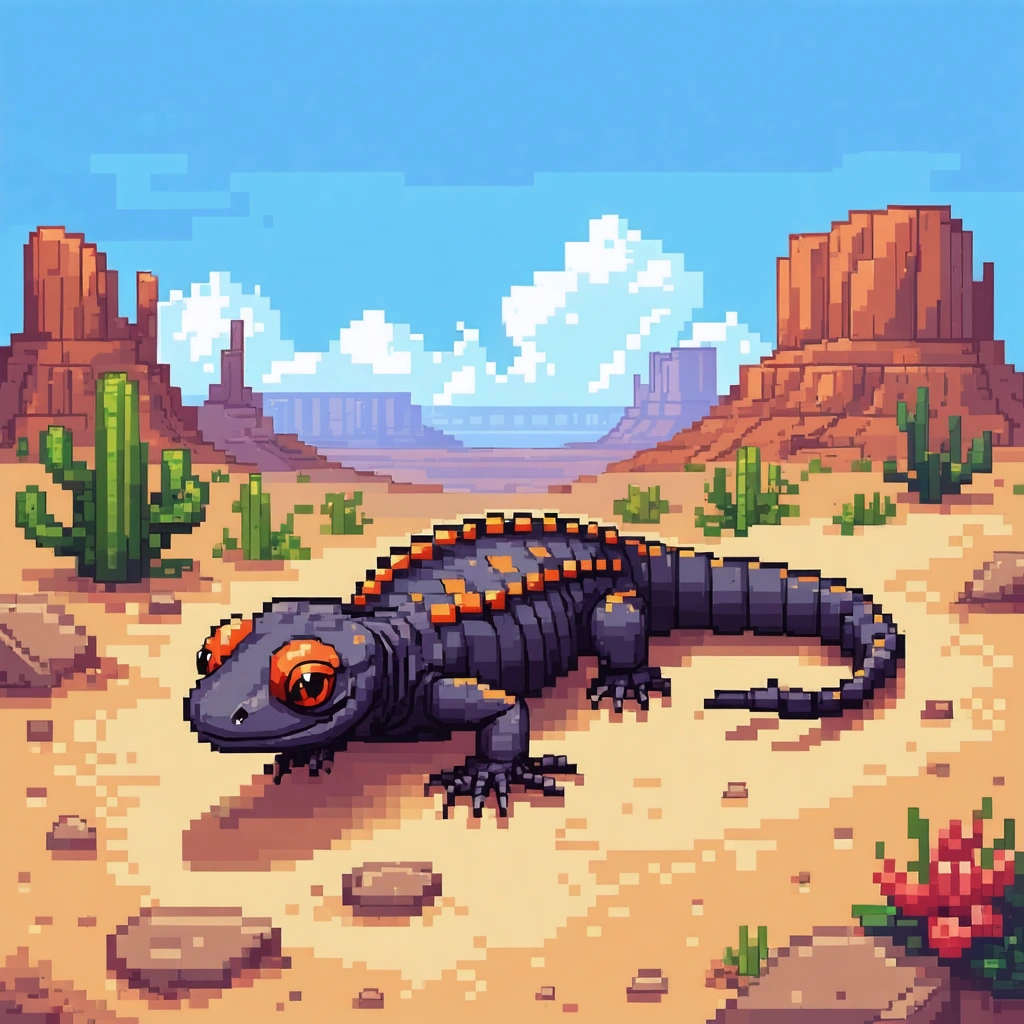
Introduction: The Mojave’s Unyielding Challenge
In the heart of the Mojave Desert, the Gila monster embarks on a journey where climate change carves new chapters in nature’s narrative. Interestingly, these unathletic reptiles confront a harsh reality as warming temperatures and erratic weather patterns reshape their habitat. Moreover, scientists report that while some areas may emerge as new sanctuaries, many existing oases with dwindling water sources risk irreversible transformation. Consequently, the survival of the Gila monster becomes emblematic of a broader environmental plight. Additionally, researchers remain committed to understanding these adaptive challenges, thereby alerting policymakers and the public alike.
Climate Change and Its Direct Impacts
Rising Temperatures and Altered Rainfall
Initially, climate change introduces rising temperatures and decreasing rainfall, which significantly alters the delicate balance of the desert ecosystem. For example, scientists recently observed reduced vegetation in critical areas that once provided necessary cover for the reptiles. Furthermore, intermittent heavy storms sometimes bring flash floods that modify the landscape unexpectedly. In light of these factors, the reptiles must adapt with limited mobility and strict thermal limits. Consequently, these harsh shifts alarm conservationists who advocate for more robust protection measures.
- Increased ambient heat exposes the lizards to lethal temperatures.
- Changing precipitation disrupts the distribution of resources.
- Shifted weather patterns accelerate the loss of suitable habitat.
Habitat Fragmentation and Evolving Landscapes
Transitioning next to habitat fragmentation, researchers document that the improvement of adjoining areas does not adequately offset losses in prime regions. Therefore, even if new pockets of refuge appear, the surrounding environment often lacks connectivity. This disconnect creates isolated islands where Gila monsters risk genetic bottlenecking. Additionally, these reptiles must frequently cross scorching terrain, further exacerbating stress and lowering survival rates.
- Oases shrink steadily under persistent dryness.
- Ecological corridors disintegrate as urban development multiplies.
- Temperature extremes push the reptiles to the brink.
The Intricacies of Adaptation: Scientific Perspectives
Researchers delve deeper into this drama, investigating how desert dwellers adapt to a swiftly changing environment. Notably, field studies capture behavioral shifts as Gila monsters become more active during favorable microclimate windows. Moreover, preliminary data suggest that reptiles reshuffle their activity times, emerging during cooler moments. Scientists appreciate that although these behavioral alterations offer some hope, they do not completely compensate for a rapidly warming climate.
Innovative Research and Conservation Efforts
In response to these challenges, conservationists implement various strategies to support the reptiles. First, scientists track the movements of individual Gila monsters with advanced GPS technology. Then, they model future habitat distributions to predict potential safe zones. Furthermore, interdisciplinary teams combine ecological research with climate science to propose innovative interventions. The table below summarizes key findings from recent initiatives:
| Factor | Observed Change | Conservation Response |
|---|---|---|
| Temperature | Significant increase | Enhanced monitoring and cooling shelters |
| Water Availability | Irregular and scarce | Habitat restoration and artificial oases |
| Habitat Connectivity | Fragmented corridors | Establishment of wildlife passages |
Furthermore, researchers encourage community involvement and knowledge exchange in order to bolster these initiatives.
Narrative Accounts: Stories from the Desert
Equally compelling, personal accounts describe encounters with the Gila monster amidst an ever-changing desert backdrop. Witnesses who brave the Mojave recount how the reptiles navigate shifting dunes and scarce water holes with surprising resilience. One local biologist observed, “I saw a Gila monster basking in a diminishing oasis at sunset, its fate hovering between hope and despair.” Additionally, indigenous communities share ancient legends that resonate with current ecological upheavals. They believe that nature’s wrath intertwines with human actions, urging responsible stewardship of the land. Consequently, these narratives invigorate public discourse on climate change and environmental justice.
Challenges and Opportunities in the Field
Moreover, field observations offer a blend of optimism and caution. Researchers note that while some Gila monsters adjust their behavior, others struggle when recurrent droughts reduce their chances of reproduction. Consequently, a clear need emerges to integrate conservation strategies with scientific insights. Besides, researchers advocate for policies that address not only the immediate effects of warming but also the long-term instability of desert ecosystems. Ultimately, these intertwined challenges propel the scientific community towards innovative solutions that transcend traditional conservation methods.
Looking Ahead: Strategies for a Changing Environment
In the coming decades, scientists predict that the Mojave Desert configuration will continue to evolve. Therefore, adaptive management becomes essential. Additionally, policymakers promise to collaborate with researchers and local communities to design measures that mitigate adverse effects. They propose establishing protective reserves and implementing sustainable water management practices to secure the future of both the ecosystem and the Gila monster.
Future Research Priorities
Future studies will concentrate on the following areas:
- Longitudinal studies that track behavioral changes over time.
- Integrative models that forecast habitat shifts under different climate scenarios.
- Community-led initiatives to restore and preserve natural oases.
Consequently, each research finding steers conservation actions that directly benefit the fragile desert ecosystems. Moreover, interdisciplinary collaboration fosters innovative solutions that reconcile human development with nature’s resilience.
Conclusive Thoughts
In conclusion, the Gila monster’s struggle in the Mojave Desert epitomizes the broader consequences of global climate change. Thus, although some new habitats may emerge, most Gila monsters remain confined to shrinking oases. Additionally, scientists and conservationists work diligently to identify practical solutions. In summary, the unfolding narrative of these reptiles provides both a cautionary tale and a beacon of resilience. Through persistent research and proactive conservation efforts, communities and experts aspire to secure a future where both the Gila monster and its delicate desert home continue to thrive. Ultimately, the story of the Mojave Desert remains a powerful testament to nature’s resilience, inviting global attention and inspiring concerted action.




